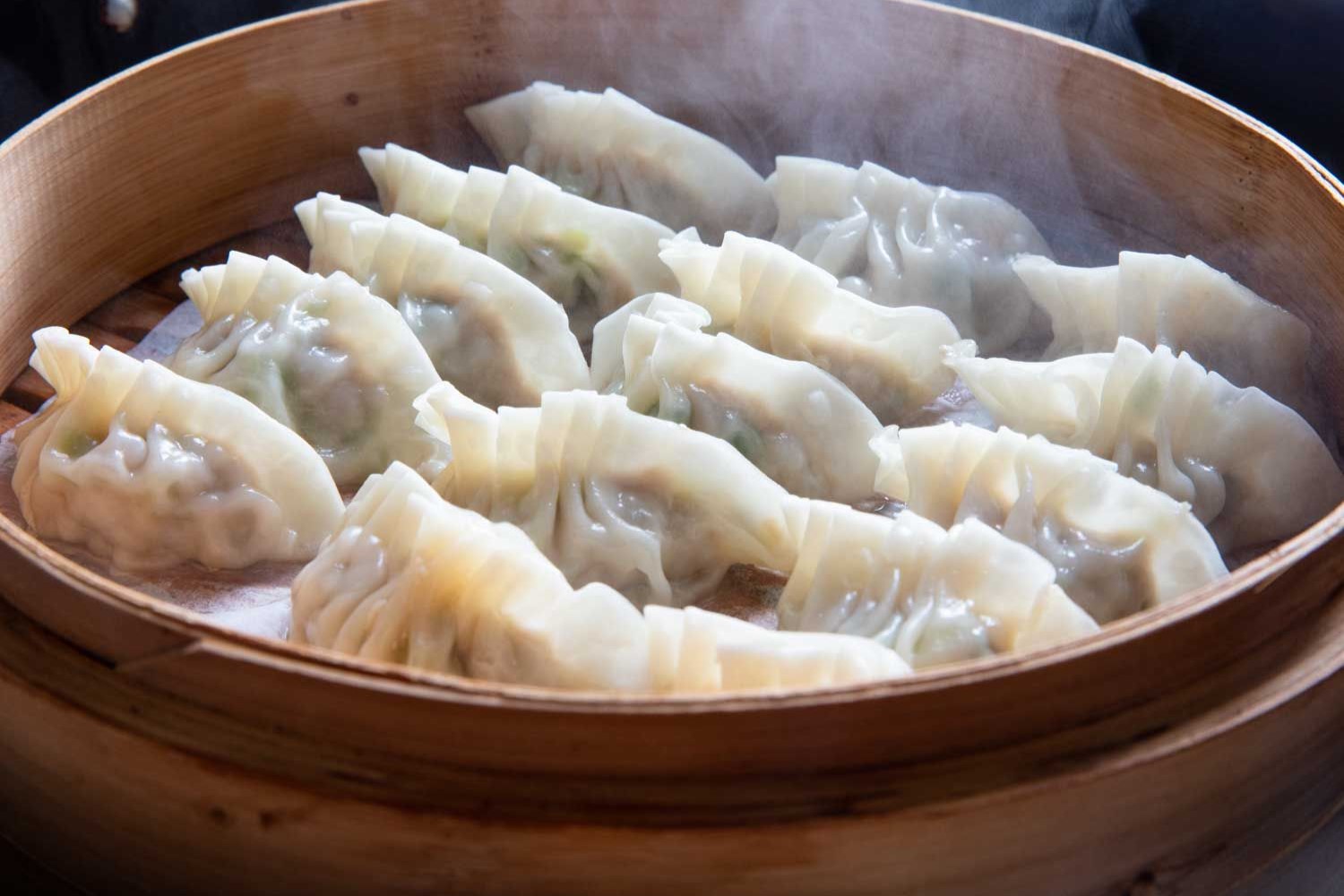
Dumplings are a beloved and flavorful dish found in various cuisines around the world. From Chinese jiaozi to Indian momos, and Polish pierogis to Italian tortellini, dumplings come in countless delicious varieties. Not only are they incredibly tasty, but they are also packed with nutrients that make them a fantastic addition to any diet.
In this article, we will explore the nutrition facts of dumplings, highlighting their key ingredients and the health benefits they offer. Whether you enjoy them steamed, boiled, or fried, dumplings can provide a satisfying and nutritious meal. So, let’s dive into the nutritional profile of these delectable bite-sized treats and discover why they are not only a comfort food but a healthy one as well.
Key Takeaways:
- Dumplings are a tasty treat with a range of fillings and cooking methods. They offer a good source of energy, protein, and vitamins, making them a versatile and nutritious choice for any occasion.
- Whether steamed, fried, or boiled, dumplings provide essential nutrients and can cater to various dietary needs. From low-calorie fillings to gluten-free options, there’s a dumpling for everyone to enjoy.
Calories
One dumpling typically contains around 80-100 calories, depending on the size and filling.
Carbohydrates
Dumplings are a good source of carbohydrates, providing energy to fuel your body. Each dumpling contains approximately 12-15 grams of carbohydrates.
Protein
Most dumplings contain a moderate amount of protein, with around 3-5 grams per serving. Protein is essential for muscle growth and repair.
Fat
Dumplings are relatively low in fat, with only 2-3 grams per serving. However, the fat content may vary depending on the cooking method and filling.
Fiber
Some dumplings, especially those made with whole wheat or whole grain wrappers, can be a good source of dietary fiber. Fiber aids in digestion and helps maintain a healthy digestive system.
Sodium
Dumplings can be high in sodium, especially if they are bought frozen or from a restaurant. It’s important to be mindful of your sodium intake, especially if you have a medical condition that requires a low-sodium diet.
Vitamins
Dumplings can provide various vitamins depending on their fillings. For example, dumplings filled with vegetables may contain vitamins A, C, and K, while meat-filled dumplings can provide vitamins B12 and E.
Minerals
Dumplings can also contribute to your mineral intake. Some fillings, like spinach or broccoli, may offer calcium and iron, while meat fillings can provide zinc and selenium.
Variety of Fillings
One of the great things about dumplings is the wide variety of fillings available. From vegetarian options like tofu and mushroom to meat fillings like pork or chicken, there is a dumpling to suit every palate.
Steamed Dumplings
Steamed dumplings are a healthier alternative to fried ones. They are lower in calories and fat, making them a great choice for those watching their weight.
Fried Dumplings
Fried dumplings may be higher in calories and fat due to the cooking method. However, they offer a crispy and indulgent treat for special occasions.
Boiled Dumplings
Boiled dumplings are a classic option that retains the natural flavors of the ingredients. They are often served in a flavorful broth or with dipping sauces.
Gluten-Free Options
For individuals with gluten intolerance or celiac disease, there are gluten-free dumpling wrappers available. These allow everyone to enjoy the deliciousness of dumplings without any gluten-related issues.
Low-Calorie Fillings
Dumpling fillings can be made with lean meats, vegetables, or seafood, resulting in lower-calorie options. These are perfect for those who are conscious of their calorie intake.
High-Protein Fillings
For individuals looking to increase their protein intake, dumplings can be filled with high-protein ingredients like shrimp, tofu, or lean cuts of meat.
Nutritional Sauces
Pairing dumplings with nutritional sauces like soy sauce, sesame oil, or chili sauce adds flavor without significantly increasing the calorie count.
Homemade Dumplings
By making dumplings at home, you have control over the ingredients and can make healthier choices. You can use whole wheat wrappers or experiment with different fillings to suit your dietary needs.
Veggie Dumplings
Vegetarian dumplings can be packed with nutrients from a variety of vegetables like cabbage, carrots, and mushrooms. They offer a wholesome and satisfying choice for plant-based eaters.
Dumplings in Asian Cuisine
Dumplings are a staple in Asian cuisine and are enjoyed in various forms across different countries. From Chinese jiaozi to Japanese gyoza and Korean mandu, dumplings have a rich history and cultural significance.
Dumplings for Every Occasion
Whether you’re celebrating Lunar New Year, enjoying dim sum with friends, or simply craving a comforting meal, dumplings are a versatile and delicious choice for any occasion.
In conclusion, dumplings offer a satisfying and flavorful experience while providing essential nutrients. From their varied fillings to different cooking methods, there is a dumpling to suit every taste and dietary preference. So why not explore the world of dumplings and enjoy their nutritional benefits?
Conclusion
In this article, we explored the nutrition facts of 20 different types of dumplings. From classic Chinese jiaozi to savory Italian ravioli, dumplings are a versatile and flavorful dish enjoyed around the world. Dumplings can be a good source of nutrients, depending on the ingredients used and the cooking method. They often contain a combination of proteins, carbohydrates, fats, and various vitamins and minerals. However, it’s important to be mindful of portion sizes and the type of fillings when considering the nutritional value of dumplings.Whether you prefer steamed, boiled, or fried, be sure to enjoy dumplings in moderation as part of a well-balanced diet. Incorporating a variety of dumplings into your meals can be a fun way to explore different flavors and culinary traditions. So go ahead, indulge in these delectable treats while being mindful of your nutritional needs.
FAQs
1. Are dumplings healthy?
Dumplings can be a healthy choice when made with nutritious fillings and cooked using healthier methods like steaming or boiling. Be mindful of the type of dough used and opt for whole wheat or alternative flours for added nutritional benefits.
2. How many calories are in dumplings?
The calorie content of dumplings varies depending on the specific type and the fillings used. On average, a dumpling can range from 30 to 150 calories. It’s important to check nutrition labels or use a calorie-tracking app for more accurate information.
3. Are there gluten-free dumpling options?
Yes, there are gluten-free dumpling options available. Certain recipes use alternative flours like rice flour or tapioca flour to create gluten-free dumplings. Additionally, you can find gluten-free dumplings in specialty stores or make your own using gluten-free ingredients.
4. Can I freeze dumplings?
Yes, you can freeze dumplings for later consumption. After preparing the dumplings, place them on a baking sheet and allow them to freeze individually. Once frozen, transfer them to a freezer-safe container or bag. Frozen dumplings can be cooked directly from the freezer, just adjust the cooking time accordingly.
Was this page helpful?
Our commitment to delivering trustworthy and engaging content is at the heart of what we do. Each fact on our site is contributed by real users like you, bringing a wealth of diverse insights and information. To ensure the highest standards of accuracy and reliability, our dedicated editors meticulously review each submission. This process guarantees that the facts we share are not only fascinating but also credible. Trust in our commitment to quality and authenticity as you explore and learn with us.


